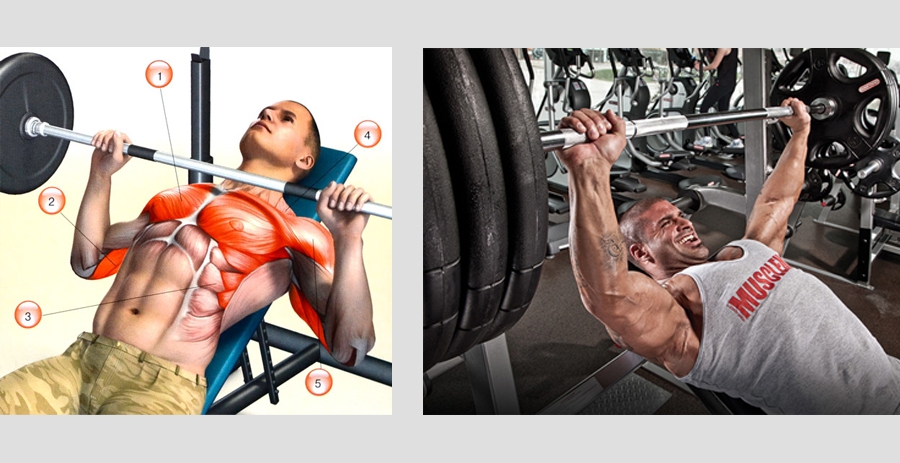The bench press with an upward incline is an effective bench press exercise that is used by many lifters
Content
Applications and benefits
This type of bench press is used in bodybuilding, powerlifting and other strength training.
Allows you to specifically pump the pectoral muscle with an emphasis on its top.
Bodybuilders use the incline variation to work the top of the chest for definition, contour, and symmetry. Powerlifters use it as an auxiliary movement in the bench press program.
Slanted position allows you to harvest more "cleanly"
What muscles work
Main focus on the upper chest
Also involved in the movement of the anterior bundle of the deltoid muscle and triceps.
Incline Press Technique
- Having set the angle of inclination at about 30 - 35 degrees and after warming up, we lie down on the bench and bring the shoulder blades together. The grip width is about the same as with the classic presses, the hands are strongly squeezing the bar. We focus on the legs;
- We remove the bar from the racks or take it from the partner, while inhaling and holding the breath, we begin to lower the bar under control to the upper region of the pectoral muscles;
- Touching the chest, with a powerful movement, straining all the involved muscle groups as you exhale, we squeeze the bar up.
- Thus performs the specified number of repetitions.
The trajectory of movement in this variation of the bench press is vertical.
It is worth noting such a moment, if you perform a movement more like a power one and this is your bench press, we press our elbows as close to the body as possible. If you are working on relief, click on bodybuilding.
Place in training
It is recommended to perform a barbell bench press on an incline bench with an upward slope on the day of chest training, but after powerful basic exercises - a power bench press lying on a horizontal bench or push-ups on uneven bars with weight.
Options
Bench back tilt:
30 degrees - works the middle part of the chest and top;
45 degrees - the middle part practically does not work, the main load is on the upper chest;
60 degrees - maximum load on the top of the pectoral muscles;
There is also a variation with the back tilted down, but this is a different exercise.
FAQ
On what to perform?
You will need any bench with the ability to adjust the back. The optimal angle of the bench is 30-40 degrees.
What mistakes to avoid?
We avoid repulsion, it is fraught with injury.
Shaking of the body, there is no rigid and stable position.
Using a deflection or bridge. Here we work without it.
Excessive weight. Everything is trite here, but still this is a very common mistake that breaks the technique.
Useful links
https://www.youtube.com/watch?v=2jFFCy8JBU8



